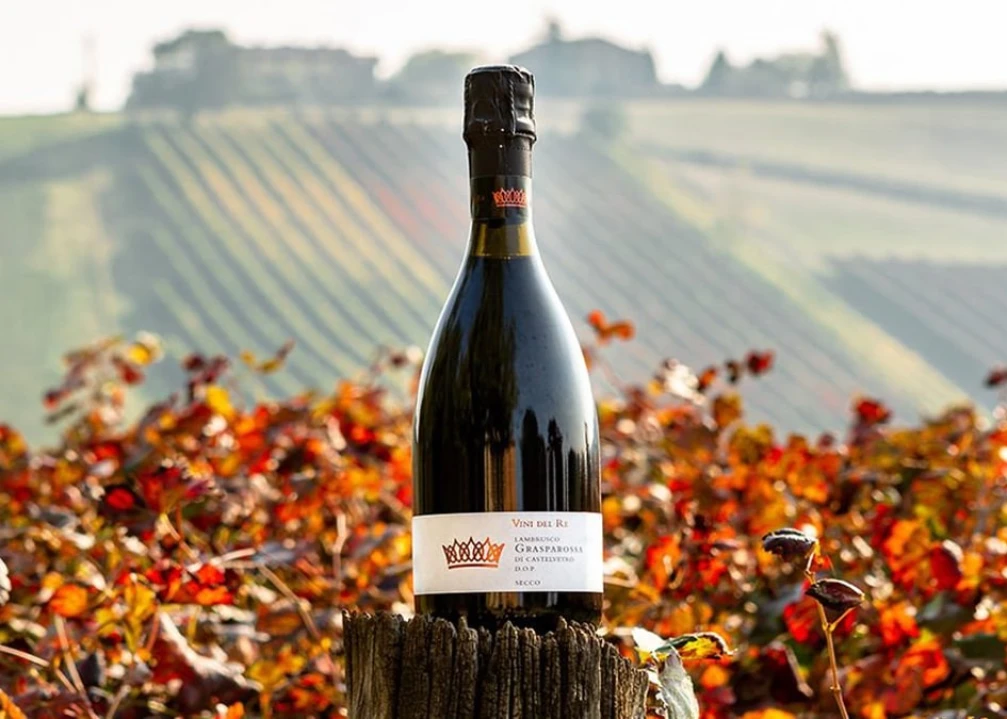When you think about the wines from Emilia Romagna which wines do you think of? Personally, I think of Lambrusco. I’m not talking about the low-quality, overproduced, old-school Lambrusco from the 70’s and 80’s that set the negative image for Lambrusco that some may remember today.
Lambrusco has come a long way since those days with various clones of Lambrusco showing different characteristics in the wine and various levels of residual sugars from dry to sweet. Today I’m going to share a wine from Cantina Settecani from the Grasparossa di Castelvetro.
Lambrusco is a slightly sparkling, frizzante, red wine grown in the north central region of Emilia Romagna. It’s a wine that is fresh and meant to be enjoyed young and chilled. It’s typically light to medium-bodied, fruity with soft tannins and medium to high acidity.
There are several Lambrusco clones, which all show a different side of Lambrusco. The Lambrusco Reggiano DOC is an all-encompassing DOC throughout the region. Lambrusco di Sorbara is lighter in color and is more floral and fragrant than the others. Lambrusco Grasparossa di Castelvetro has the most body, color, tannin and richer fruits. Lambrusco Salamino di Santa Croce.
You can find Lambrusco produced in a number of sweetness levels from dry (secco), semi-dry (semisecco), semi-sweet (amabile) and sweet (dolce). It’s all personal preference, but the Lambrusco of today is known for their drier style versions versus those of the sweet styles of the past.
The Winery – Settecani
Settecani is a cooperative in the Emilia Romagna region founded in 1923 by 48 farmers. Today the coop is comprised of over 200 farmers mostly from the areas of Castelvetro, Castelnuovo Rangone and Spilamberto. The winery is located south of Modena in the village of Settecani, from which it takes its name. Legend has it that the name Settecani derives from a time when a priest transformed 7 men into dogs that were using the lords name in vain.
The farmers pay strong attention to producing sustainable wines and in 2016 became certified through VIVA, viticulture impact assessment on the environment. These farmers not only produce grapes, but take care of livestock, pigs, fruits and vegetables to produce many of the treats from this region like parmeggiano and prosciutto. They live and breathe in the fields in which they work and live so it's important to these growers to take care of the land.
Settecani grows grapes on over 740 acres of land with each grower tending to about 3.5-4 acres more or less. On average most of the vineyards sit at about 980 feet above sea level. They produce only sparkling wines, and their main production of Lambrusco is based on Lambrusco Grasparosso di Castelvetro, but they do work with some of the other Lambrusco clones.
What is unique about the Lambrusco Grasparossa di Castelvetro?
The Lambrusco Grasparossa grapes that are used in the production for the Lambrusco Grasparossa di Castelvetro DOC are grown a few miles south of Modena around the town of Castelvetro. Thirteen communes make up this DOC on flat land that is rich in minerals and is rather fertile. The Lambrusco Grasparossa grapes produce Lambrusco that carry more color in the glass, more tannin with a higher alcohol, a fuller body and darker fruits. They tend to be more purple in color and can carry aromas of strawberries, black cherries, plums and violets. One of the regulations to be labeled under this DOC is that the wine must consist of at least 85% of the Lambrusco Grasparossa grapes with up to 15% of the other Lambrusco varieties along with Malbo Gentile.
The Cantina Settecani Lambrusco Grasparossa di Castelvetro DOC Amabile is ruby in color with purplish hues. The aromas lean towards a grapey nose with blueberry jam, ripe raspberries and violets. This was a very lightly sparkling wine that had a medium acidity giving the wine a tingle until the finish. A round sweetness on the palate of grape, blueberries and blackberries. Soft tannins near the short finish. Overall a refreshing wine and a perfect sipper if you like a tinge of sweetness and bubbles.




